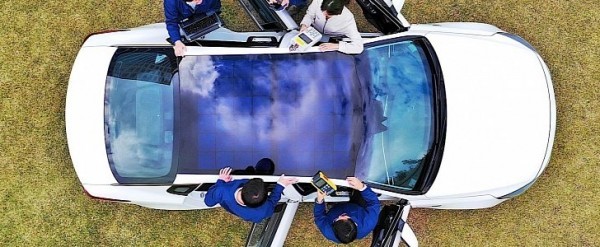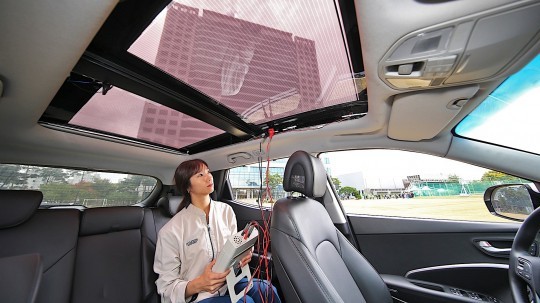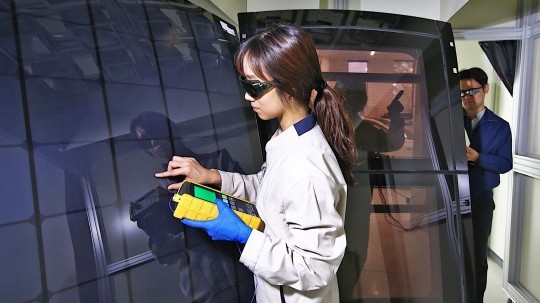
Back at the beginning of November, South Korean auto group Hyundai-Kia announced plans to fit several of its models with solar panel roofs starting 2019. More importantly, these roofs will be available not only for electric or hybrid cars but for internal combustion ones as well.
In ICE cars, the goal of the system is to support the fuel burning process, which in turn will lead to increased fuel efficiency. For electric and hybrid cars, this could mean more range. WHAT IS THE HYUNDAI SOLAR ROOF
Hyundai says the system it is working on has only three components: the solar panels, a controller and the battery.
The solar panels are of course meant to capture the Sun’s energy. The controller is supposed to control voltage and current with the help of Maximum Power Point Tracking (MPPT), allowing for the maximization of the current produced by the solar panels.
This power is converted and then either stored in the battery of the system or used when the car needs more juice to decrease the load on the alternating current (AC) generator.
 Hyundai says it will be developing three different types of solar panels, meant for each of the three major group of cars: internal combustion, hybrid and electric.
Hyundai says it will be developing three different types of solar panels, meant for each of the three major group of cars: internal combustion, hybrid and electric.
For instance, the carmaker says that when using a 100W solar panel on a car, some 100 Wh of electricity can be produced. This, of course, can only be done in ideal conditions, meaning summer noon and 1,000 W/m2 intensity of radiation.
By all accounts, that amount of electricity might not seem as much, but given the fact that a car could spend possibly even five hours under the clear bright sky, as it waits for its owner to come back from the office, that could amount to 0.5 kWh.
At this stage of EV development, 0.5 kWh of power is the equivalent of a little under half of the battery capacity of the Ioniq hybrid.SOLAR ROOF FOR HYBRID CARS
Hyundai will be fitting the first generation of its new technology on the hybrid cars of the group. In this case, the system is made of silicon solar panels integrated into a standard car roof.
As per the manufacturer, the system will be capable of charging 30 to 60 percent of the car’s battery over the course of a day, with the percentage depending heavily on weather conditions and other environmental factors.
 SOLAR ROOF FOR ICE CARS
SOLAR ROOF FOR ICE CARS
Using a solar roof to give power to an internal combustion car is a first in the industry, especially when considering the fact that Hyundai plans to do so on volume production models.
To be made semi-transparent, this second generation of the technology can also be integrated into a panoramic roof, making for both an aesthetic and useful application of the technology.
Hyundai says the solar roof on ICE cars will make them less pollutant as a result of the fact that they will not use as much fuel as before, helping them comply with stricter CO2 emissions rules. SOLAR ROOF FOR ELECTRIC CARS
Electric cars, on the rise in terms of sales, are likely to produce a lot of strain on the electric infrastructure of many countries. Providing a car with the possibility of generating its own electricity, even for auxiliary systems, might take some of that strain away.
Hyundai says the solar roof for electric cars is currently in testing stages, but when deployed will probably help with both range and charging times.








